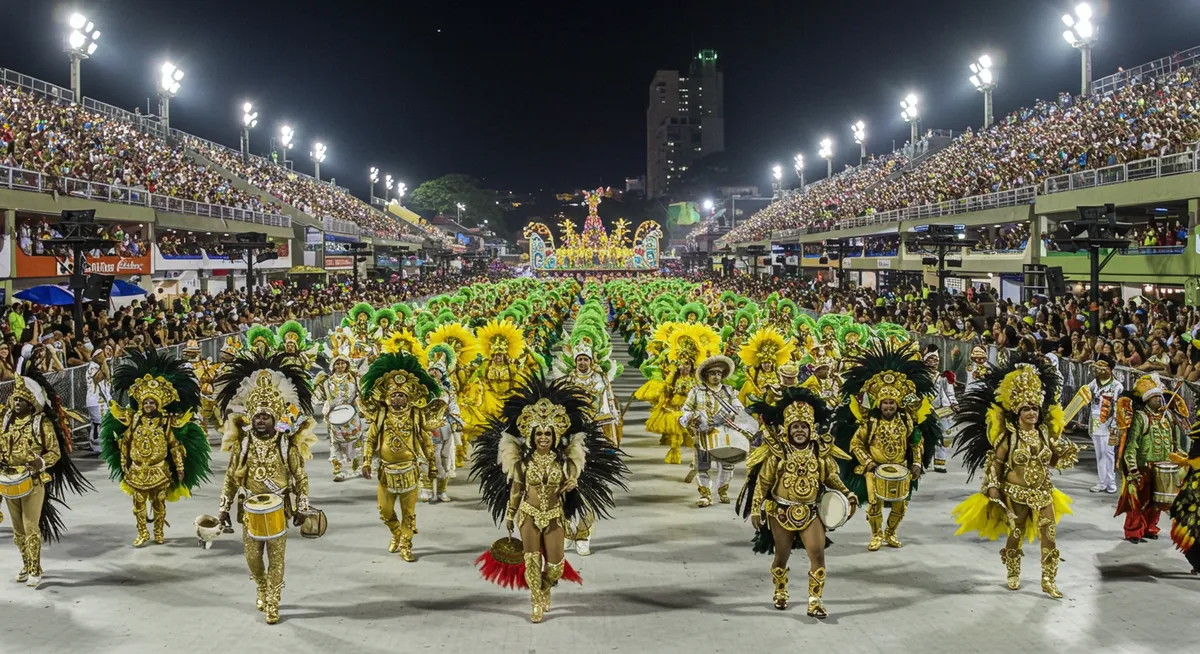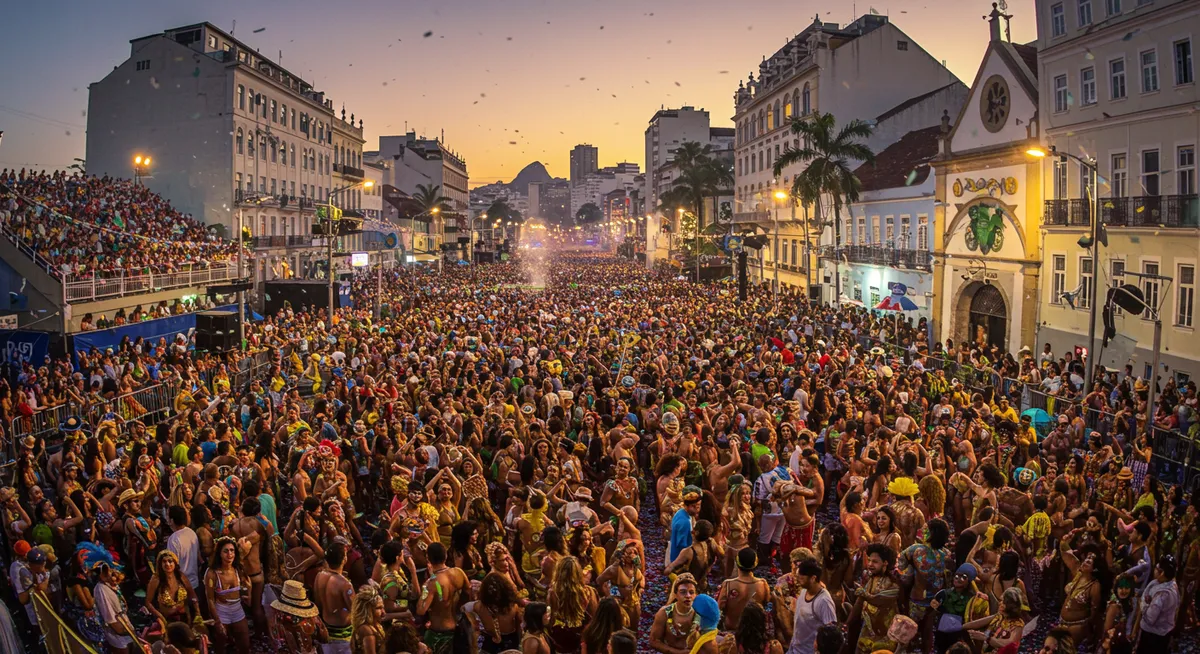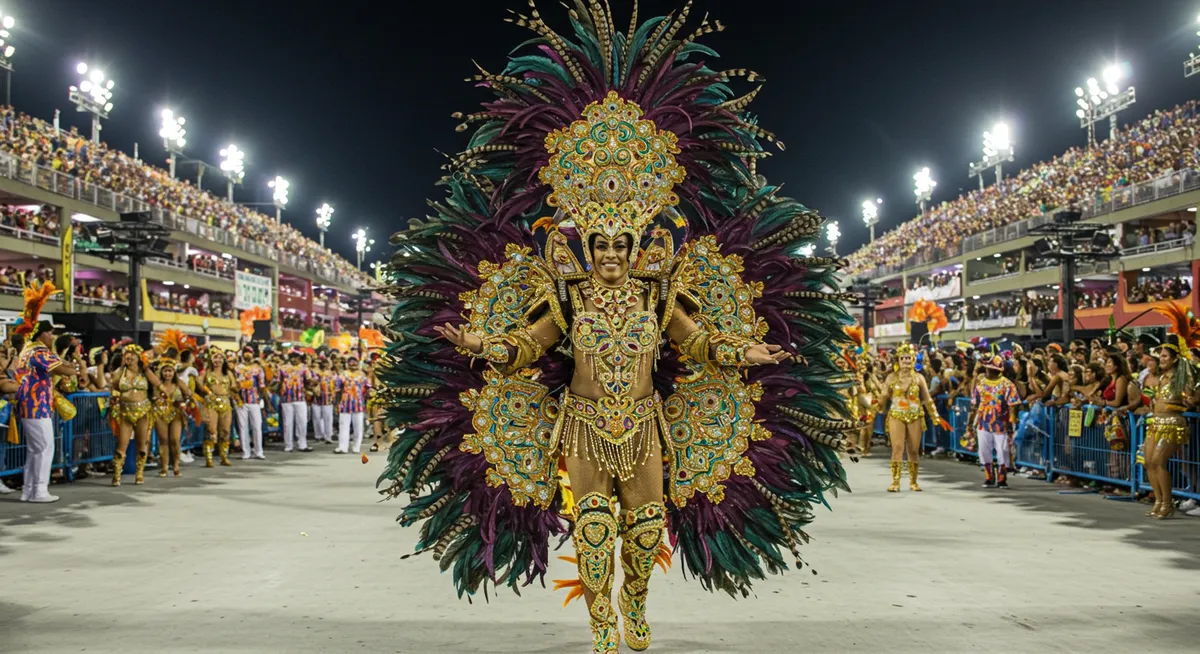Rio Carnival Guide | Brazil's Spectacular Festival of Dance & Music

Rio Carnival: The World's Greatest Festival
Rio de Janeiro's Carnival stands as the pinnacle of festival culture worldwide, transforming Brazil's most iconic city into an explosion of color, rhythm, and uninhibited celebration. For five days before Lent, Rio becomes the epicenter of global festivity, where elaborate samba parades, street parties, and cultural expressions showcase Brazil's unique fusion of European, African, and indigenous influences. This guide explores the essential aspects of Rio's Carnival, providing travelers with context and practical information for an unforgettable festival experience.

The Cultural Significance of Rio's Carnival
Rio's Carnival emerges from a remarkable convergence of historical and cultural influences:
- European Origins: The pre-Lenten celebrations brought by Portuguese colonizers provided the initial framework
- African Influence: Rhythms, dances, and spiritual expressions introduced by enslaved Africans form Carnival's soul
- Indigenous Elements: Native Brazilian cultural motifs appear in many visual and thematic aspects
- Modern Brazilian Identity: Carnival has evolved to represent Brazil's vibrant, diverse cultural personality
Key Carnival Experiences
Rio's Carnival offers several distinct ways to participate in the celebration:
The Sambadrome Parades
The centerpiece of Rio's Carnival features the city's elite samba schools competing in spectacular night-long parades:
- Samba Schools: Community-based organizations that spend the entire year preparing their 80-minute performance
- Parade Structure: Each school presents a thematic presentation with 3,000-5,000 participants, multiple floats, and coordinated costumes
- Competition Elements: Schools are judged on percussion, theme development, costumes, harmony, and overall impact
- Viewing Experience: From grandstand seats to luxury boxes, various options offer different perspectives on the spectacle

Blocos: The Street Parties
Throughout Rio, hundreds of neighborhood street parties offer a more accessible and spontaneous carnival experience:
- Neighborhood Character: Each bloco reflects the personality of its community with distinctive music and traditions
- Musical Diversity: From traditional samba to rock, funk, and electronic music variations
- Popular Blocos: Cordão do Bola Preta (downtown), Sargento Pimenta (Beatles-themed), and Banda de Ipanema are among the most famous
- Participatory Spirit: Unlike the Sambadrome, blocos invite everyone to join the music, dancing, and celebration
Carnival Balls
Formal and themed balls offer another dimension of the Carnival experience:
- Magic Ball: The legendary gala at Copacabana Palace hotel attracts celebrities and the elite
- Gay Gala: One of the most famous LGBTQ+ celebrations during Carnival
- Themed Events: Various hotels and venues host distinctive balls catering to different tastes and interests
- Costume Culture: Elaborate and creative costumes are essential to the ball experience
Planning Your Carnival Experience
Creating a memorable Rio Carnival experience requires careful planning:
Timing and Schedule
Carnival dates change annually based on the Catholic calendar:
- Official Dates: The five days before Ash Wednesday, typically in February or early March
- Pre-Carnival: Events start ramping up several weekends before the official celebration
- Champions Parade: The Saturday after Carnival features the top samba schools performing again
- Daily Schedule: Blocos occur morning through night, while Sambadrome parades run from 9pm until dawn
Practical Considerations
Rio during Carnival requires strategic planning:
- Accommodation: Book a year in advance for the best options and rates
- Transportation: The metro is the most efficient way to navigate the city during Carnival
- Sambadrome Tickets: Purchase through official channels months in advance
- Safety Precautions: Crowded environments require vigilance regarding belongings and personal safety
- Weather Preparation: February in Rio is hot and humid—stay hydrated and use sun protection

Beyond the Celebration: Understanding Carnival's Context
Appreciating the deeper dimensions of Carnival enhances the experience:
- Economic Impact: The celebration generates over $1 billion for Rio's economy
- Social Significance: Samba schools are vital community organizations providing cultural education year-round
- Religious Context: Despite its exuberance, Carnival remains connected to its Catholic origins as a pre-Lenten celebration
- Cultural Expression: The celebration often incorporates social and political commentary through parade themes
Experience the World's Greatest Celebration
Rio's Carnival offers travelers the rare opportunity to witness and participate in a festival that represents the pinnacle of communal celebration, artistic expression, and cultural fusion. Whether you're drawn to the spectacular pageantry of the Sambadrome, the spontaneous energy of street parties, or the elegant traditions of Carnival balls, there's a perfect Carnival experience waiting for you.
By planning thoughtfully and approaching the celebration with an appreciation for its cultural context, you'll discover that Rio's Carnival provides one of the most extraordinary and transformative festival experiences available anywhere in the world.
Ready to experience Rio's Carnival?
Start planning your ultimate Carnival adventure with our practical travel tips and insider guides.
Check back soon for our upcoming detailed guides to samba school parade tickets, the best blocos street parties, and carnival costume workshops.
Explore More Latin American Festivals
Carnival is just one of many spectacular cultural celebrations across Latin America. Discover more incredible festivals in the region:
Continue your exploration of Latin American festival culture by returning to our Latin American Festivals Guide, where you can discover other extraordinary celebrations from Mexico's Day of the Dead to Peru's Inti Raymi.
← Back to Latin American Festivals